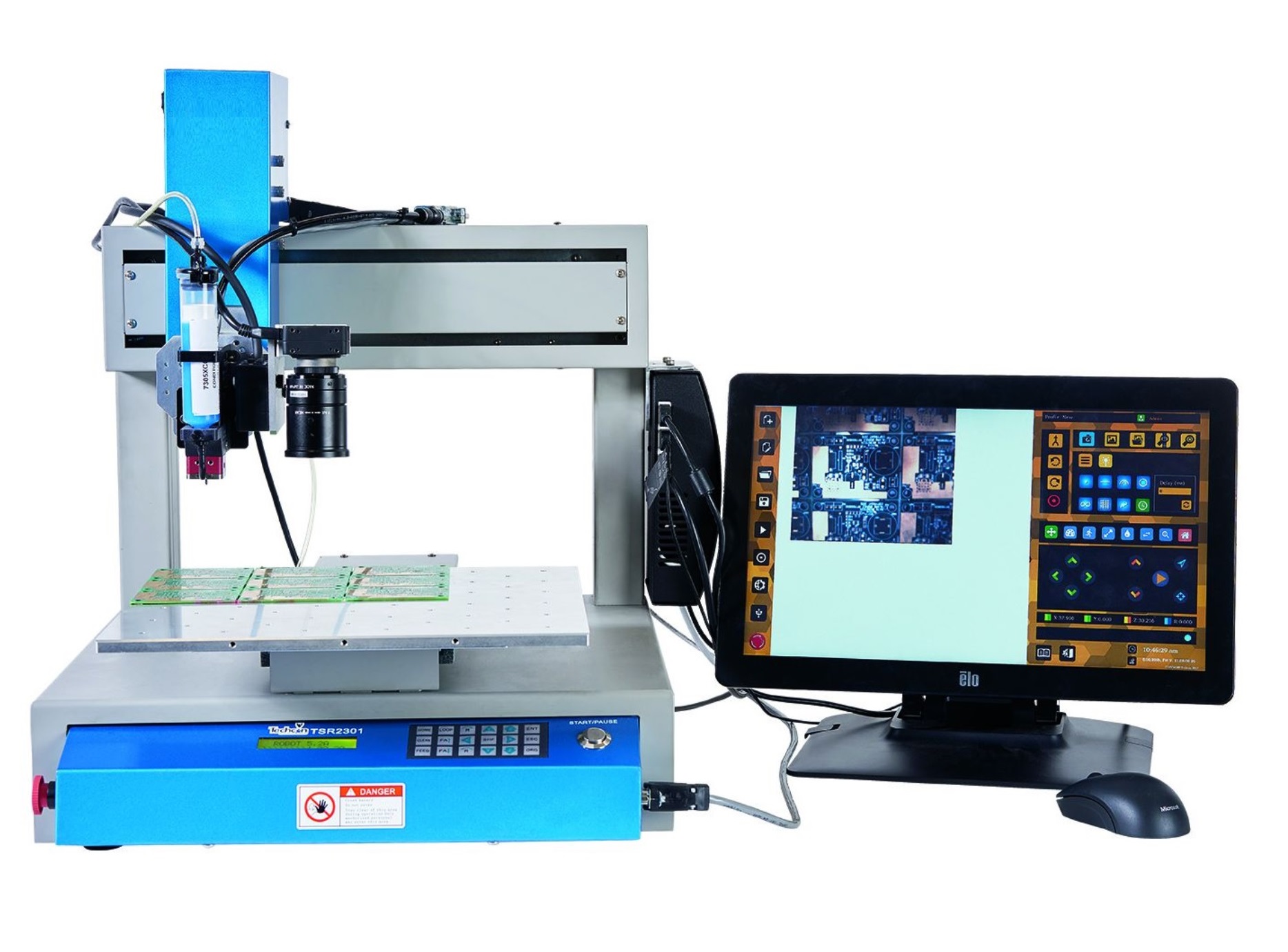Information guideBenchtop Robots
Benchtop robots have been a useful asset and have aided the assembly process since the early 1990s. These small footprint robots can perform many tasks without compromising precision and flexibility, while able to provide the advantage of an advanced automated process to even the smallest assemblers and manufacturers who did not have the financial ability to invest in automated equipment - until now.
XYZ robots are simple to set up, easy to program, will cut down on a learning curve and have self-diagnostic features to assess errors in programming. Specific manufacturers around the world produce compact but cost saving robots and even fewer manufacturers and specialist dispensing companies have the experience to place them in such a way that even smaller businesses will maximise profits from the investment.
Among the advantages of these robots;
- Functionality is restricted only by the user's imagination.
- They are built on a robust platform and can be configured to suit numerous end-user applications without investing in additional equipment.
- Robots offer many cost benefits to manufacturers.
- Small footprint translates to huge savings on the factory floor space.
- Manual applications can be performed with much greater precision and repeatability.
- Maintenance on these machines is negligible and their throughput is much higher as compared to manual hand application, thus providing major time savings. Large industrial dispensing robots and special built systems might not be the answer, owing to higher initial costs and a much longer payback period. However, the payback found on smaller dispensing machines can sometimes be as little as six months, especially in economies that have high labour costs.
Bench robots guide
Adhesive Dispensing Ltd
S Abbott 29-05-08

| Related Articles |
> How to attach the adapter assembly hose to the syringe barrel
> How to connect dispenser to external source using I/O Configuration
> Watery liquid drips from either TS250, TS255, TS350, TS355 syringe dispensers
> Thick paste, gels, silicones, sealants, epoxies, etc not flowing or restricted when dispensing
> Time pressure dispensing tutorial
> Filling techniques for syringe barrels
> Advice for dispensing different fluid types
> Advice for dispensing sealants, grease and solder pastes
> Smooth flow tapered tips
> Bench-top fluid dispensing: Easy when you know how
> Dispensing System: Reducing maintenance requirements in dispensing applications
> Piston Comparison for 700 Series Dispensing Syringes
> Rotary Auger Valves � Pros and Cons
> Dispensing Adhesives Material Can Be Challenging
> Improving the Grease Dispensing Process
> Benchtop epoxy dispensing small shot
> The Negative Effects of Reusing Syringes and Accessories
> Fluid Viscosity Chart Table
> Dispense valve material selection guide
> TS5600 series diaphragm valves specifications
> TS5420 needle valve specifications
> TS5520 spray valve specifications
> TS1212 pinch tube valve specifications
> TS1201 pinch tube pen valve specifications
> Fluid dot anatomy volume compared to deposit diameter
> General advice for handling Cyanoacrylates in bottles
> Avoid needle tips clogging using Cyanoacrylate adhesives
> Basic TS250/ TS255 bench dispensers manual applications
> Reason to use a brush tip with a timed pulse dispenser
> If you use Cyanoacrylates...
> Some typical dispensing applications
> Reducing Hand Fatigue and Variability in Medical Device Assembly Processes
> General advice for handling Cyanoacrylates adhesives
> Viscosity of Fluids to Compare With
> Dispenser spares & accessories
> Spray Valve Coverage Chart
> Techcon cartridge gun spares & accessories
> Techcon spool valve spares & accessories
> Techcon spray valve spares & accessories
> Techcon needle valve spares & accessories
> Fisnar peristaltic pump spares & accessories
> Dispensing tip gauge size chart
> Dilatent Definition
> Conformal Coating Product Description - a brief guide
> Potting Encapsulating Product Description - a brief guide
> Sealants Product Description - a brief guide
> Adhesive Technical Information Chart
> Adhesive Dispensing Valve Selection Guide
> Chemistry Technical Information
> Volume, Weight and Length Conversions
> Temperature Conversions
> Durometer Conversions
> Fluid Coverage Information
> Adhesive Dispensing Luer Lock & Luer Slip Tip Attachment
> Accelerator Definition
> Activator Definition
> Acrylic Definition
> Alloy Definition
> Anaerobic Definition
> Aqueous Definition
> Balling Definition
> Braze Paste Definition
> Caulk Definition
> Centipoise Definition
> Conductive Epoxy Definition
> Cyanoacrylate Definition
> Epoxy Definition
> Hot Melt Definition
> Polyurethane Definition
> Silicone Definition
|
|